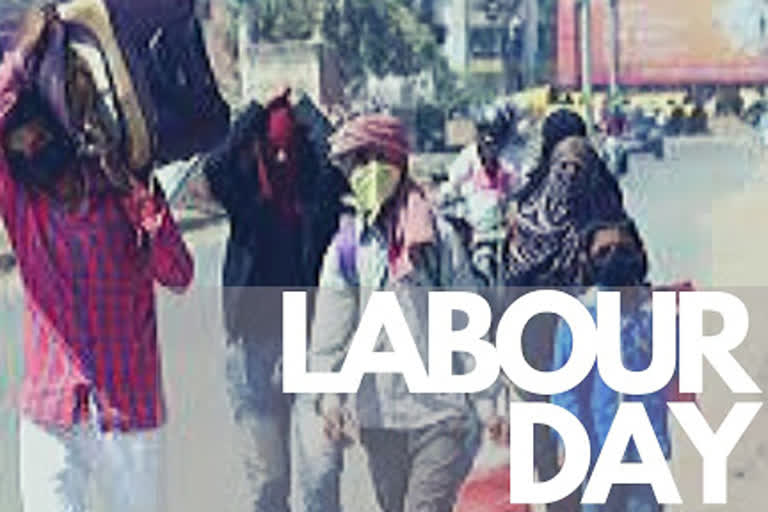Hyderabad:May 1 is observed around the globe as May Day, Labour Day or International Workers’ Day, in a bid to commemorate the contribution of workers and the historic labour movement.
However, this year’s May Day celebrations won’t be the same, given the nationwide lockdown imposed to contain the spread of coronavirus disease and the consequential job loss among the working class, particularly the daily wage earners and those engaged in the unorganised sector.
With factories, restaurants, shops, construction industry and other businesses shut for over a month, and no social security in place, hundreds of thousands of migrant workers have been left with no income opportunities.
Facing starvation and no public transport in sight, lakhs of migrant workers have begun a long march home to their villages hundreds of kilometres away from the country’s urban spaces in a desperate bid to find shelter, dignity, food and possibly a shred of familiarity.
This lockdown has, as novelist Arundhati Roy said in her article for the Financial Times, “worked like a chemical experiment that suddenly illuminated hidden things...as the wealthy and the middle classes enclosed themselves in gated colonies, our towns and megacities began to extrude their working-class citizens — their migrant workers — like so much unwanted accrual.”
Labour, supply chain and lockdown
The lockdown and resultant migration have created an acute labour shortage in markets, factories, industries, warehouses, transportation and distribution, thereby impacting the supply chain.
Businesses are struggling to deploy 20% of the required labour force, and factories are working at lower capacity and labour thus producing less than what is usually produced.
The severity of the situation can be gauged from the fact that the Delhi government has recently asked the trade unions to help it find the required labour for the factories, warehouses, transportation and distribution of essential commodities.
Agriculture and lockdown
The uncertainty of the availability of nearly 10 lakh migrant workers and the lack of mechanical transplanting options have made farmers in Punjab and Haryana choose cotton over rice plantations, as per an Indian Express report.
Paddy farming is labour-intensive and the lockdown has forced the “cheap labour” to return to their native places.
According to the International Labour Organisation’s estimate, which is based on Census 2011 figures, around 24 lakh migrants work in fields across India.
Resetting of market and migration trends
